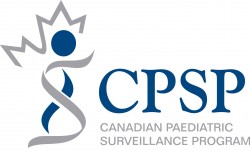Study examines incidence and nature of childhood tuberculosis disease
Every year, tuberculosis (TB) disease affects about 100 to 120 Canadians under the age of 15. Marginalized populations such as remote, Aboriginal communities and new Canadians are particularly at risk.
Investigators of a new Canadian Paediatric Surveillance Program study are working to document all cases of childhood TB disease, looking at how diagnoses are made, how TB is acquired, complications and/or co-morbidities, treatment drug regimens and compliance, adverse effects of medications and changes in drug sensitivity over time. Cases of patients with latent TB infection are excluded from this study.
Investigating these criteria will paint a more accurate picture of the number of children affected, and help determine how to improve care. It’s hoped this study will add much useful detail to information that is reported to public health units.
Typically, childhood TB disease is more difficult to diagnose than adult TB, said Dr. Ian Kitai, Tuberculosis Specialist at the Hospital for Sick Children and principal investigator. Diagnosis is difficult in children, he said, because it presents differently than in adults. For example, children with TB disease rarely cough. Instead, they may experience impaired organ function or joint problems.
“Many clinicians expect to find TB in the lungs, but it may also be found extra-pulmonary, in the bones, joints, and elsewhere” said Dr. Kitai. “It’s a big mimicker of other things. Some children start off in the oncology clinic because they’re thought to have a cancer of the bone, or a lymphoma, and then end up with us because it’s diagnosed as TB, which is generally good news for them.”
Since young patients don’t tend to cough, physicians typically have to use other diagnostic methods, such as inserting stomach tubes or performing a biopsy.
Yet even once properly diagnosed, TB in children is often more difficult to treat than in adults, said Dr. Shaun Morris, an infectious disease specialist at the Hospital for Sick Children, and the study’s other principal investigator.
“To properly treat TB requires three or four drugs, being taken for several [usually nine] months, and young patients often have trouble taking even one medication for a short period of time,” said Dr. Morris.
As a result, compliance with treatment is problematic for many young patients, said Dr. Morris. As well, side effects of TB medications are not as well documented in patients under age 15, especially their effects on the liver. And if a child’s TB disease is resistant to a certain drug, there are fewer approved alternatives that can be used for treatment.
While the main objective is to gather data about incidence of childhood TB disease, Drs. Morris and Kitai hope the study will also help tackle the disparity of cases in different regions and in different populations.
Canada’s rate of TB disease is fairly low—4.6 cases per 100,000 compared with the international average of 124 per 100,000. Yet that number jumps dramatically among Aboriginal Canadians, particularly those living in Nunavut (300 per 100,000) and new Canadians (10 per 100,000).
“We know the expected high risk groups, but this study will document it,” said Dr. Morris. “In tackling the disparity, we must first generate data; then we can take the concrete steps to make changes.”
Drs. Kitai and Morris are hopeful this study will help address the disparity but note TB is a disease relevant to all Canadians.
Travel to or immigration from TB-endemic regions is increasingly common. There are also more children with compromised immune systems due to disease, treatment or transplant, and changing patterns of microbial resistance mean TB treatment medications may not be effective for certain patients. As well, declining rates of TB may lessen physicians’ clinical suspicion of the disease.
“Although relatively uncommon, TB continues to cause preventable death and disability [for anyone infected by the disease],” said Dr. Kitai.
This study runs from September 2013 to August 2016. Visit www.cpsp.cps.ca for more information on this or other studies.
Copyright
The Canadian Paediatric Society holds copyright on all information we publish on this blog. For complete details, read our Copyright Policy.
Disclaimer
The information on this blog should not be used as a substitute for medical care and advice. The views of blog writers do not necessarily represent the views of the Canadian Paediatric Society.
Last updated: Jan 10, 2014

